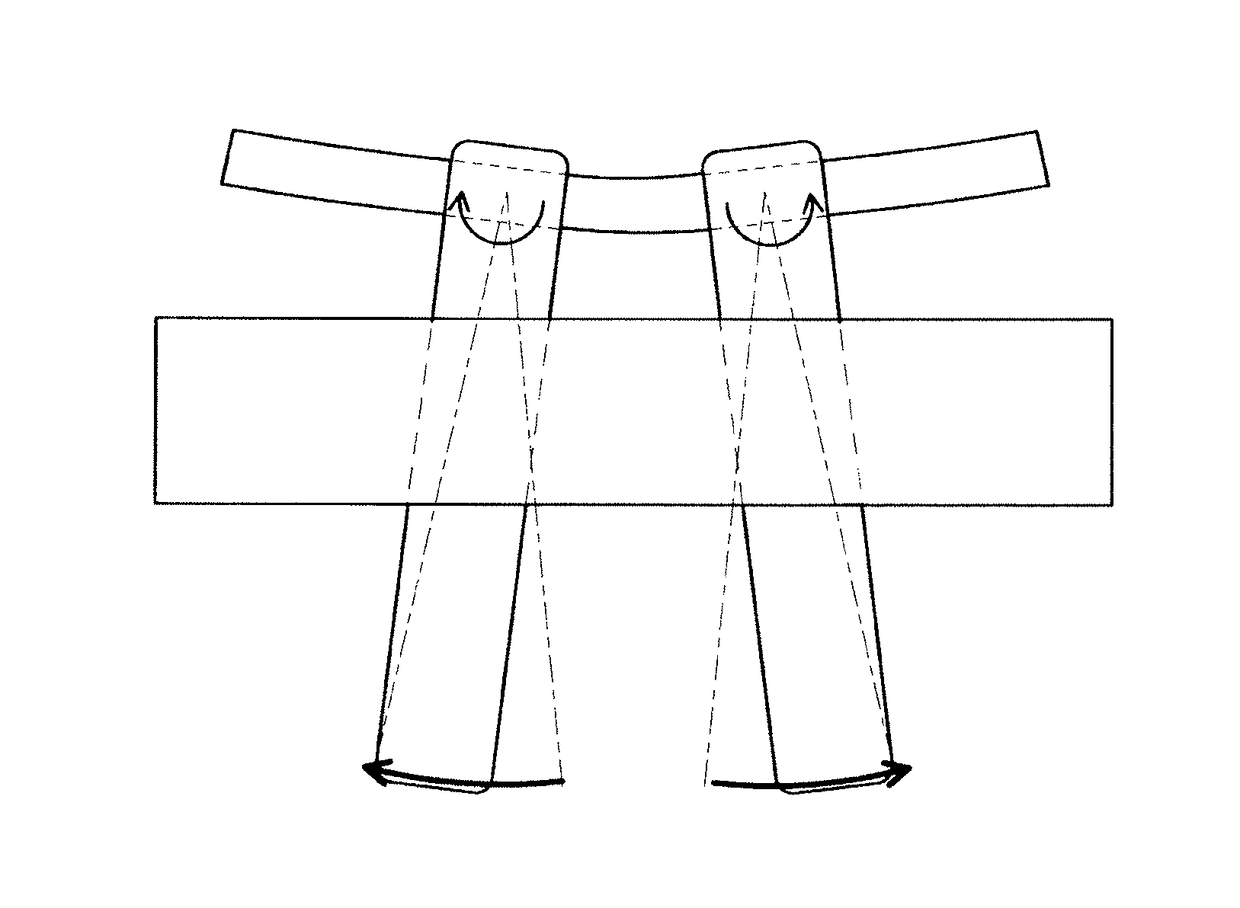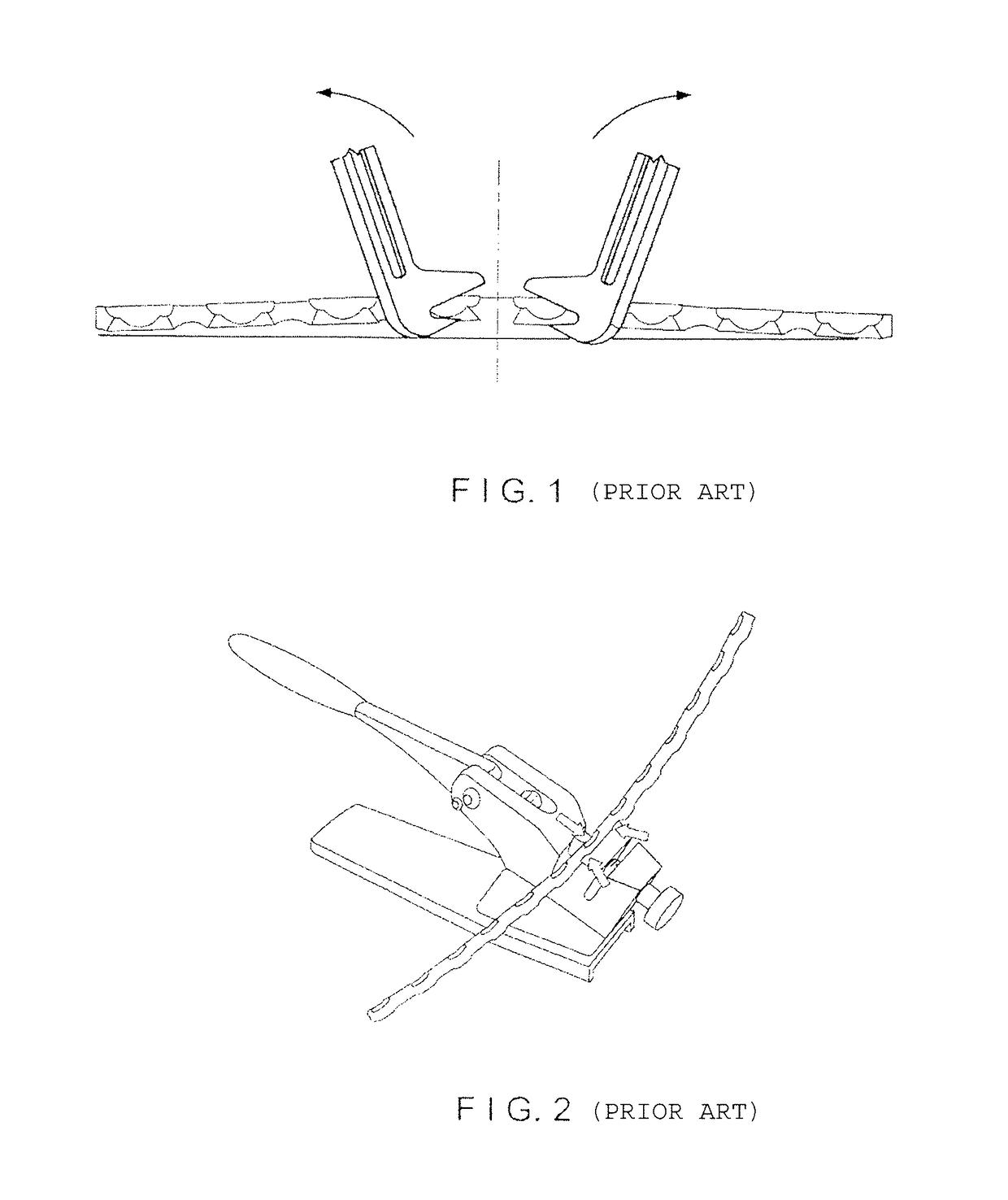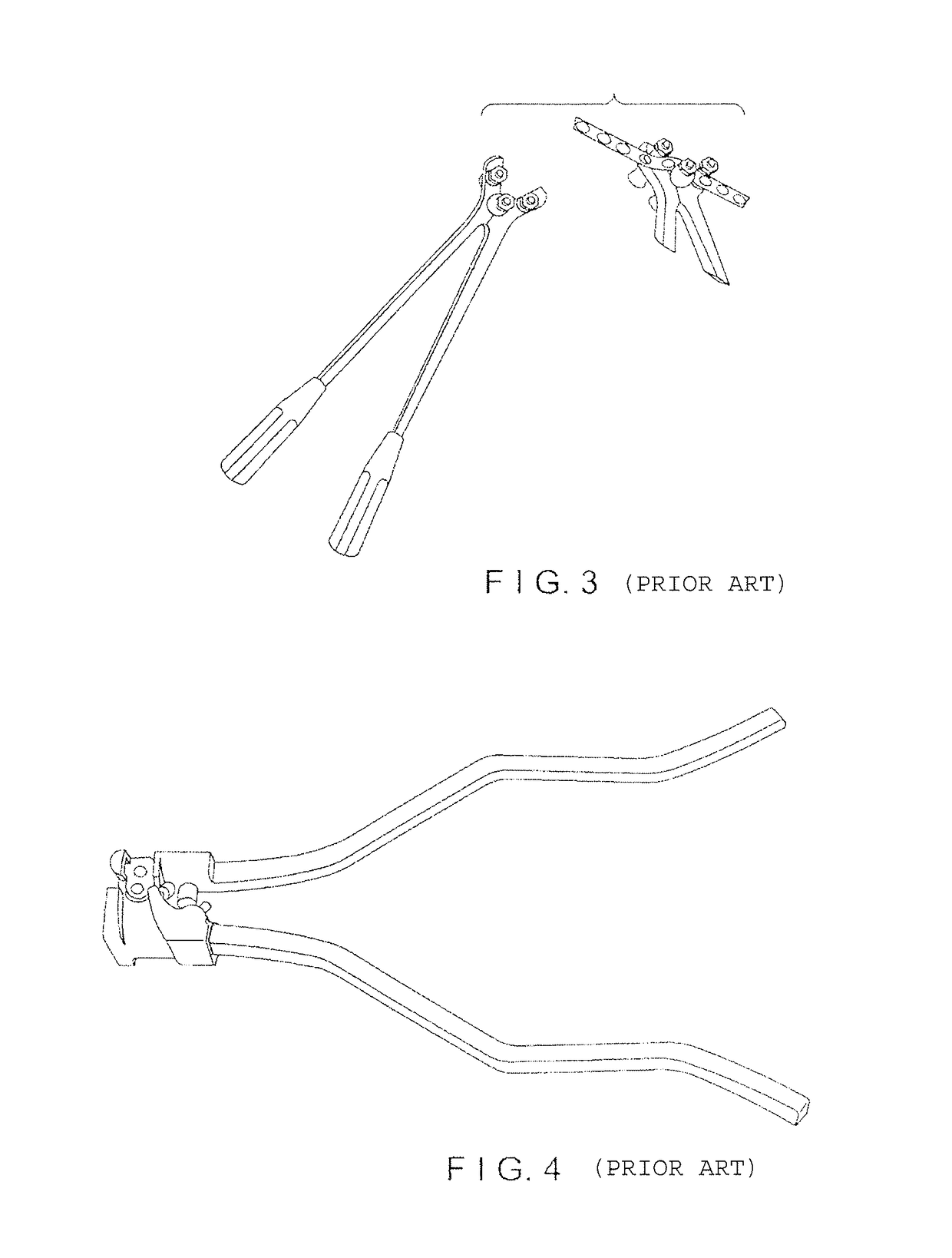System, including a bending bar and a bending cage, for bending a plate in a plane of the plate
a technology of plate plane and bending cage, which is applied in the direction of osteosynthesis devices, etc., can solve the problems of slipping of the end of the plate out of the bending tool, bending irons that typically do not work well, if at all, and the direction of the applied bending force that is outside the plate plan
- Summary
- Abstract
- Description
- Claims
- Application Information
AI Technical Summary
Benefits of technology
Problems solved by technology
Method used
Image
Examples
Embodiment Construction
[0048]As shown in FIG. 10, in a preferred embodiment, the bending cage (1) has a front opening (20) and a rear opening (21), each dimensioned to allow passage of a bending bar or bending iron (30, 31).
[0049]FIG. 11 shows the front opening (20) of the bending cage (1) having two parallel edges separated by a vertical distance (3) and having a horizontal length (2). The vertical distance (3) allows a snug fit for a vertical dimension (e.g., thickness) of a bending bar or bending iron (30, 31) while the horizontal length (2) permits free horizontal motion for the bending bar or being iron (30, 31) within the front opening (20). Thus, a range along horizontal length (2) is provided for moving at least one bending iron (30, 31) in a horizontal direction while vertical distance (3) prevents spinning or rotational movement of the bending bar or bending iron (30, 31) and maintains an applied force constrained along an axis directed by the horizontal length (2) in the bending cage (1).
[0050]...
PUM
| Property | Measurement | Unit |
|---|---|---|
| distance | aaaaa | aaaaa |
| distance | aaaaa | aaaaa |
| thickness | aaaaa | aaaaa |
Abstract
Description
Claims
Application Information
 Login to View More
Login to View More - R&D
- Intellectual Property
- Life Sciences
- Materials
- Tech Scout
- Unparalleled Data Quality
- Higher Quality Content
- 60% Fewer Hallucinations
Browse by: Latest US Patents, China's latest patents, Technical Efficacy Thesaurus, Application Domain, Technology Topic, Popular Technical Reports.
© 2025 PatSnap. All rights reserved.Legal|Privacy policy|Modern Slavery Act Transparency Statement|Sitemap|About US| Contact US: help@patsnap.com



